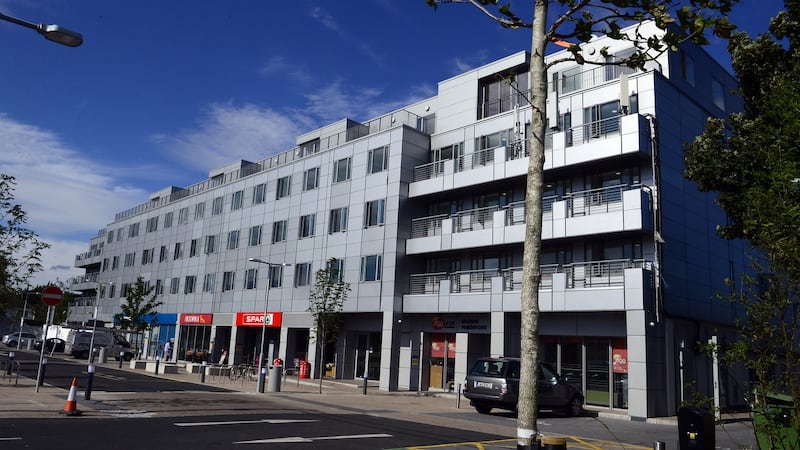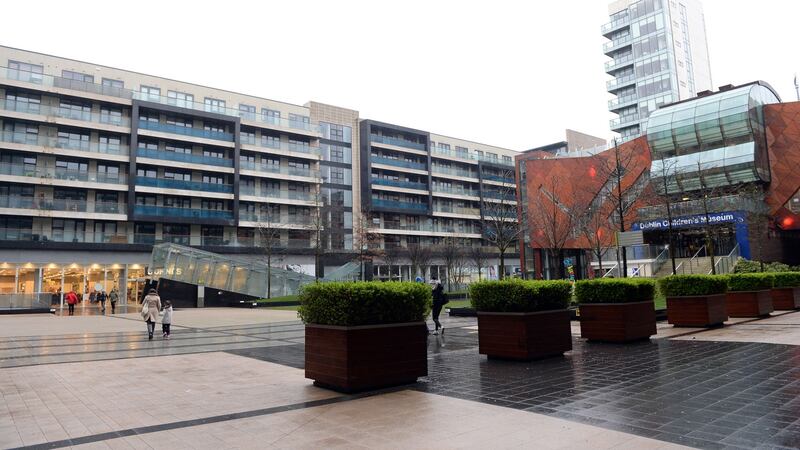“Curiouser and curiouser” cried Alice when she slipped into Wonderland. But there’s nothing curious about the crisis facing the capital’s rental market. A dearth of supply, the proliferation of Airbnb, professional landlords setting new market rates, rental restrictions which conspire to create an unequal playing field between sitting tenants and those new to the market, and the first one again, lack of supply, means that rents are roaring ahead.
Indeed such is the scale of the crisis that a drop in rents across the Irish Sea on the back of Brexit last month, means that the average rent in south county Dublin is now higher than the average rent in London, while it’s still cheaper to rent in most parts of Dublin than it is to buy.
So what’s really going on and how much more can people justifiably be expected to pay on rent each month?
0 of 3
Housing rules have failed to staunch price rises
So far, the Government’s response to the rental crisis has been on two fronts; on one, landlords have been banned from increasing rents for a period of two years, and on the other, landlords in areas designated as “rent pressure zones” can only increase rents by 4 per cent when they do.
But as the figures from Daft.ie show, with average national increases of € 134 a month in the year to March 2017, the approach hasn’t worked thus far.
One reason, put forward by economist and author of the Daft.ie report Ronan Lyons is that so-called "sitting rents" - ie the rents paid by long-term tenants, have grown at a much slower pace (27 per cent since 2013) than "market" or new rents (50 per cent). According to Lyons, this distinction amplifies the insider-outside nature of the rented sector with sitting tenants enjoying a discount relative to the market rent.
“In such a market, it would be a brave prospective tenant who would ask the landlord to see proof that the rent they would pay is only 4% higher than a year previously!” Lyons says.
It also means that a sitting tenant has a lot to risk by leaving their property, so are more likely to stay, thereby reducing “churn”.
Another issue is that the rules don’t apply to new lets. Consider the example of Ireland’s largest landlord, Ires Reit. It is currently readying the launch of a new development, The Maple, which it has built in Sandyford, south Dublin. It has set rents far in excess of norms in the area, at a staggering € 2,570 for a two-bed apartment (note the average industrial wage is about €3,000 a month). Setting rents at such a high level to begin with means that, providing it can fill the units, it could avoid the impact of the rent controls by pitching rents at their very highest to start with. It also potentially sets a floor that other landlords will aspire to base their rents on.

There are five times as many properties on Airbnb as Daft.ie
One undoubted factor in soaring residential rrents has been the introduction of Airbnb into the Irish market. According to Inside Airbnb, which collates data on Airbnb residences around the world, there are currently some 6,729 properties on Airbnb in Dublin- up from 4,931 last August - renting at an average of €104 a night. While there may be problems with the accuracy of this data - for example it has been suggested that the figures include inactive listings - it is still a good indicator of the scale of Airbnb, and its continued growth.
To put this in perspective, there are just 1,259 properties available for rent currently in Dublin on Daft.ie, with certain parts of the city facing a severe crunch. And of the Airbnb properties, almost one in two (3,165) are entire homes which suggest that many of these could be appropriate for the long-term rental market. Moreover, about 44 per cent of hosts have multiple listings - again indicating they may be running a business.
The attractions of Airbnb are obvious; last year some 6,100 Airbnb hosts in Dublin shared € 52 million or an average of € 8,524 each, which would suggest, given that man yhosts will only let a room for a certain number of nights a year, some hosts are earning significantly more than this average sum.
So far however, government has focused its efforts on placing restrictions on private landlords; it has done little to clamp down on landlords maximising their return by letting out their properties on a short term basis via Airbnb.
Change however may be on the way. Last year, An Bord Pleanala ruled that an apartment in Temple Bar needed planning permission to operate as a commercial premises, as the hosts were earning up to € 80,000 a year in income through Airbnb. Now the Department of Housing is examining the planning situation, looking to distinguish between “normal” short-term lets, and those which may have a more commercial intent, such as the aforementioned example. A report is expected in the coming weeks.
At the same time, some apartment schemes, such as Spencer Dock on the north side of the quays, are clamping down on owners letting out their properties via the platform.

Student accommodation growth is still not enough to take the heat out of market
One potential relief in sight is the plethora of student accommodation currently being developed across the capital. With the amount of supply on the market - the Higher Education Authority says that by the end of 2017 some 2,460 new units will have been put on the market, while construction is underway on another 4,100 units - it may be reasonable to expect that this could help to dampen prices.
On Mill Street, in Dublin’s Liberties for example, 400 student rooms will be made available in a development from Global Student Accommodation (GSA) and its partner Harrison Street Real Estate Capital, while on Dorset Street, 447 beds are being built on a vacant site opposite the Maldron Hotel by Hines.
However, while supply is increasing, demand remains far in excess of this, with HEA figures for 2014 suggesting that there was a deficit of some 25,000 places.
It means that in the short-term at least, rents will remain bullish for these units; a room with a shared kitchen at the New Mill will cost €249 a week, or €230 at Dorset Point for a standard ensuite.
Rent a family home, buy an apartment
If we side-step the issue of the difficulties in getting a mortgage, and particularly the challenges for middle income couples hoping to buy in Dublin on a multiple of 3.5 times their income, it’s clear that the value for those looking for a home is largely in buying, not renting.
With Help to Buy offering a taxback of as much as 5 per cent on the cost of a new home, first-time buyers now only need to come up with a deposit of 5 per cent of the sale price, while property prices have not risen as fast as rents since the crash.
Indeed the Daft.ie report shows that it is still considerably cheaper to buy, rather than rent, a property across great swathes of Dublin.
A two-bed apartment in the heart of Silicon Docks for example, will cost about €1,925 to rent - or just €1,382 to service on a mortgage, based on a rate of 3.75 per cent, and mortgage rates have since fallen. A buyer of such a property for example, could rent out a room - tax free under the rent a room scheme - and live in the property for less than €700 a month. If they were to rent a room in the property on the other hand, it would cost close to €1,000.
No surprise then that a recent scheme of apartments in the area, Hanover Lofts, was largely sold to owner occupiers working in the area.
In the west of the city, a three-bed house can be bought for repayments of €1,077 a month - or rented for €1,477, while in the north of the city, a three-bed will cost you €1,115 on your mortgage a month, or €1,448 in rent.
When it comes to larger family homes however, it starts to get cheaper to rent. A four-bed in south county Dublin costs about €2,146 to rent - or €3,174 to buy.
Here again however, insufficient supply is still making it difficult for people to complete a sale.

South county Dublin is now more expensive than London
On one side of the Irish Sea, rents are softening in the wake of last June’s decision to leave the European Union. On the other, rents appear to be on an inexorable rise.
Earlier this week, tenant referencing company Homelet said that rents in London had fallen by 1.2 per cent on the year to April, with the average rent in London falling to £1,519 (€1,796) a month compared with £1,537 a year ago.
This means that average rents in south county Dublin are now more expensive, at € 1,868 according to the latest Daft report, than average rents across London, with the south city (€1,787) and city centre (€1,690) close behind. In Chelsea, rents are higher, at about €2,078 a month, but average London rents are as low as € 1,417 in Barking, Dagenham and Havering.
In Paris, which is also competing to attract bankers post-Brexit, rents are also significant - but less than Dublin. According to Se Loger.com, the average monthly rent in Paris is € 1,363, although the comparison with Dublin may not be directly comparable, as there is a greater preference for renting smaller studio apartments in the city.
Across the Atlantic, rents are still significant, at a median of $3,350 a month in Manhattan, according to estate agency Douglas Elliman, or median was $2,750 in Brooklyn, and $2,800 in Queens.
There is still significant supply outside major urban areas
According to latest figures from the Central Statistics Office, more than 180,000 homes are currently vacant in Ireland, in addition to some 60,000 holiday homes.
Cavan (46.4 per cent) has the most vacant homes followed by Leitrim (45.6 per cent) and Kerry (43.1 per cent). Among larger towns (population of 10,000 or more) Letterkenny (14.9 per cent), Longford (14.6 per cent) and Ballina (14.3 per cent) ranked highest in terms of vacancy.
So could there be potential to redirect investment and jobs towards these regions?
It’s a strategy that towns and villages across Europe are looking to implement, as the rampant wave of urbanisation is rapidly depleting rural locations of their population, at the same time as cities are struggling to house their citizens.
In Görlitz, on the Polish border in the former East Germany, the city is offering free beer to people willing to move, while in the Ligurian village of Bormida in Italy meanwhile, the major Daniele Galliano is hoping to offer grants of €2,000 - plus rock bottom rent of about €50 a month - to encourage people to live in the village, once home to about 1,000 people, which has now dwindled to less than 400.

















